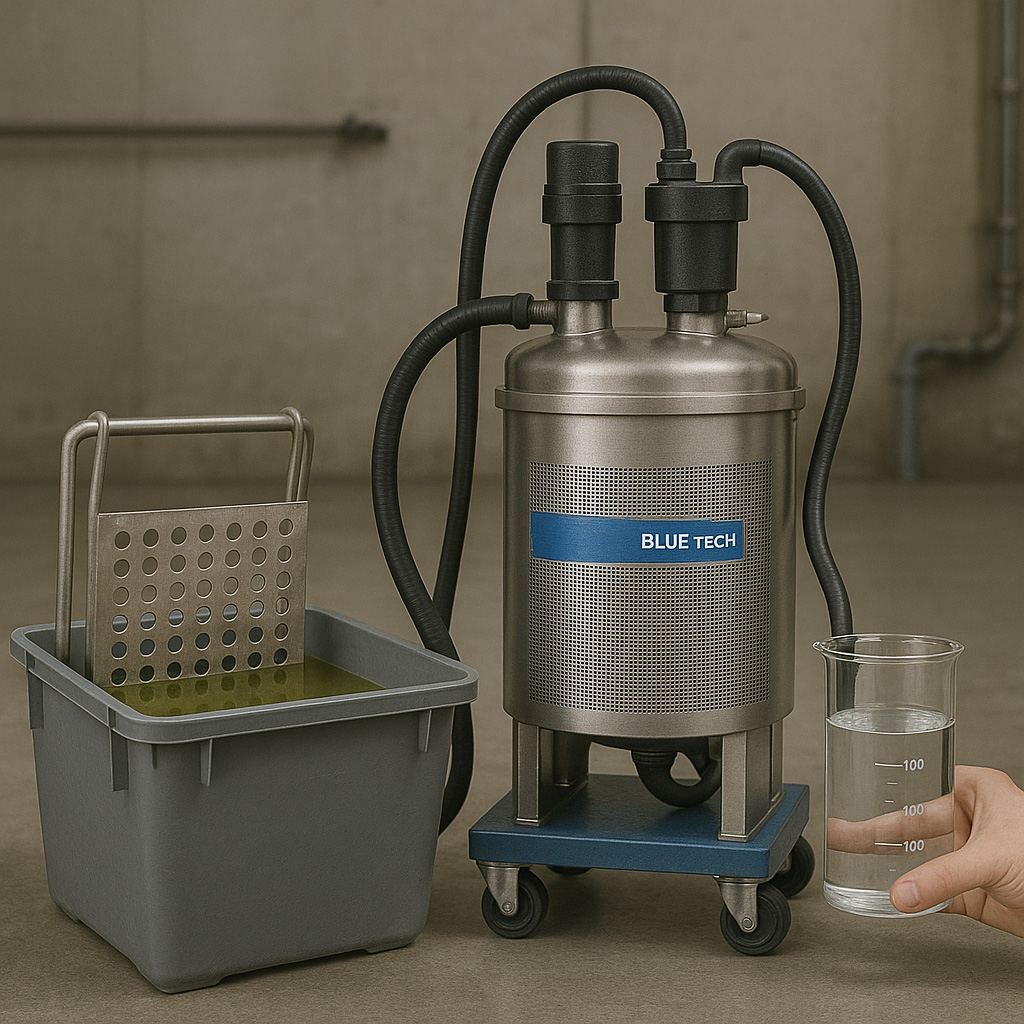Treatment and recovery of process baths
We are pleased to invite you to cooperate with us and to present the solutions developed by our company. We operate in the field of environmental protection, developing technologies and building equipment for liquid purification and water treatment. All our purification systems are based on the use of ion-exchange resins.
The application of our technology guarantees the highest quality of treated liquids and their stable parameters. Ion-exchange resin beds effectively absorb inorganic and organic contaminants dissolved in liquids and allow for the selective removal of pollutants. This capability makes it possible to treat wastewater and, above all, to recycle water circuits and close liquid loops.
What we can offer you:
- continuous removal of contaminants from pickling baths,
- continuous demineralization of rinse water,
- selective removal of metals from rinses,
- closing water loops,
- recycling of bath components, such as Zn, back into the technological process,
The result of these improvements is a significant qualitative leap in galvanized elements and substantial savings in water consumption, along with minimal wastewater generation. Continuous rinse water demineralization ensures that the electroplating process runs smoothly, prevents streaking, and produces highly durable galvanized components.

REMOVAL OF IRON (Fe) DIRECTLY FROM PICKLING BATHS
As the only company in Poland, we are able to close the liquid loop in the pickling process. This process is mainly applied when phosphoric acid H3PO4 is used as the pickling agent (excellent pickling performance, better than hydrochloric acid HCl), in order to fully recover the acid and return it to the pickling bath. The process involves continuously passing the pickling bath through an ion-exchange unit, where dissolved iron Fe (as Fe2+ cation) is captured, while the eluate containing pure phosphoric acid is directly returned to the bath.
The advantages of the process are:
- essentially, a one-time filling of the pickling tank with phosphoric acid, and later only minimal replenishment of acid losses in the tank. The pickling bath can operate for a very long period without the need for replacement.
- continuous removal of iron Fe from the pickling bath, which significantly improves its performance. Unmatched pickling quality. No pitting. Metal does not corrode during the pickling of components!!!
- significant reduction of iron Fe carryover into the rinse after the pickling bath (since it does not accumulate in the bath),
- the technologies used in the bath purification process are, of course, acid-resistant,
- after replacing the acid in the pickling bath, the operating procedures around the bath remain unchanged.
We propose conducting a “bucket test” as well as a technical trial of the purification installation at your company.
NOTE:
For accurate design of this ion-exchange station, it is necessary to provide at least an approximate estimate of the iron Fe load entering the pickling bath per unit of time. Further operating parameters of the station will then be calculated accordingly.



